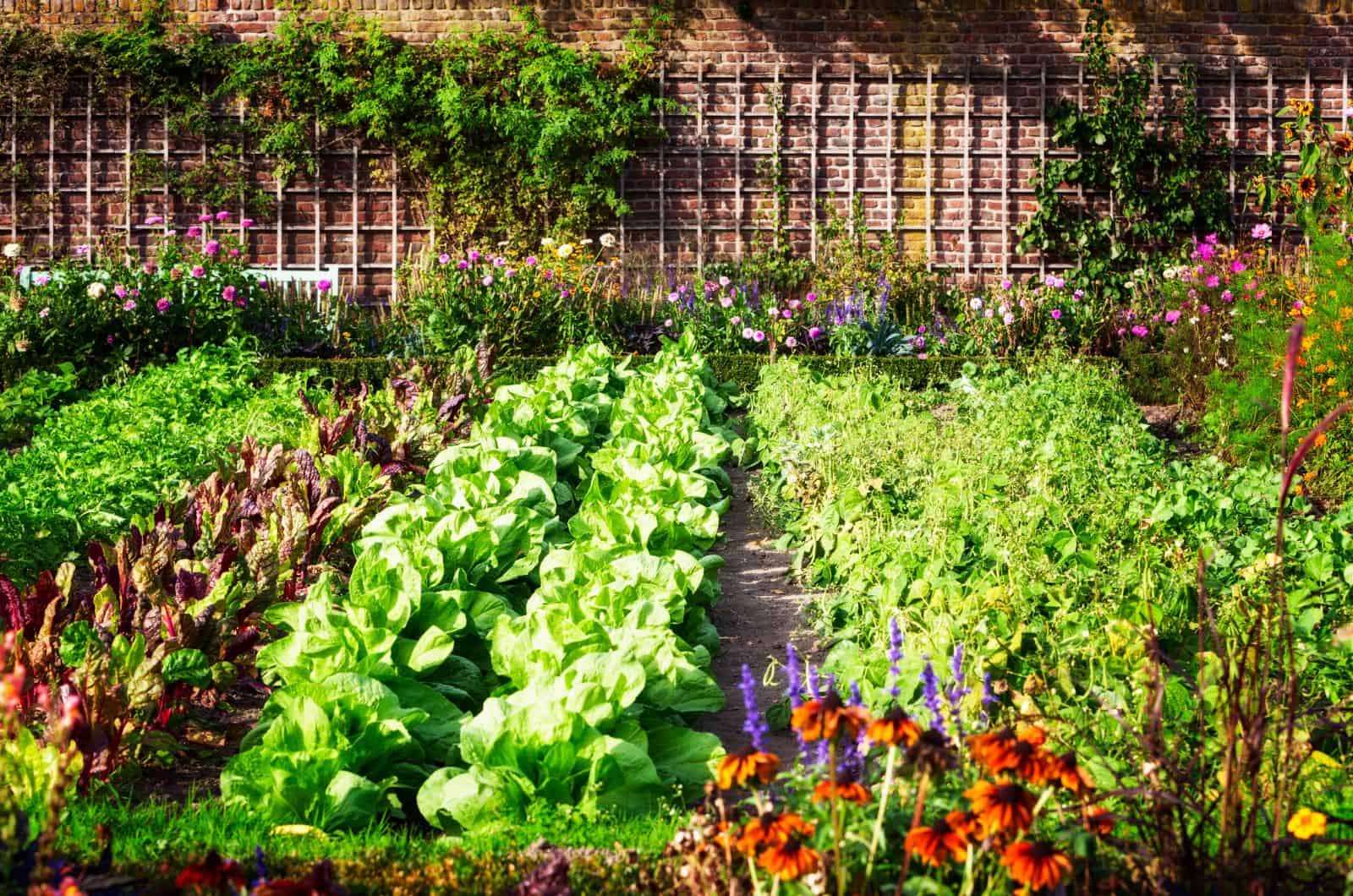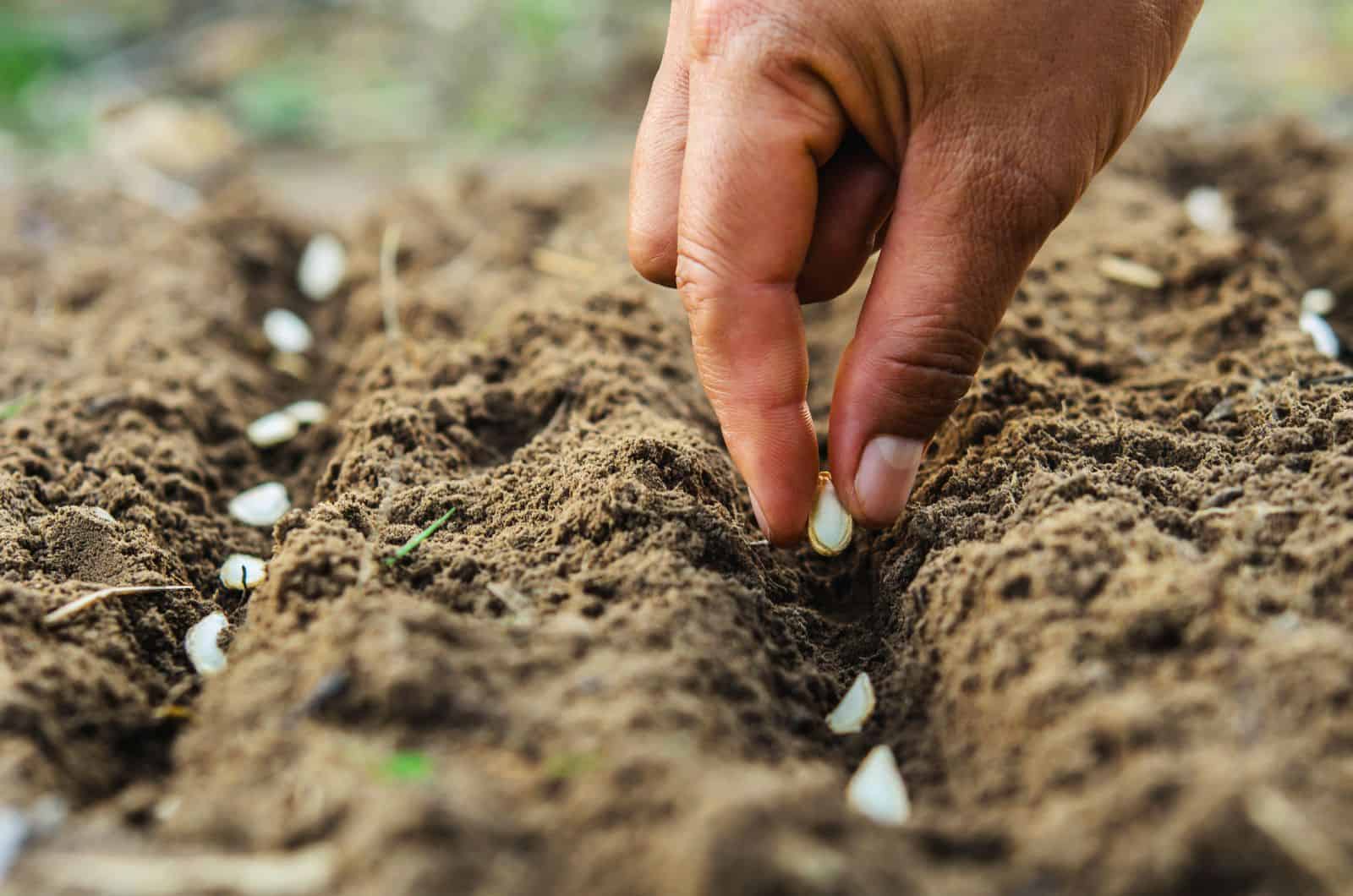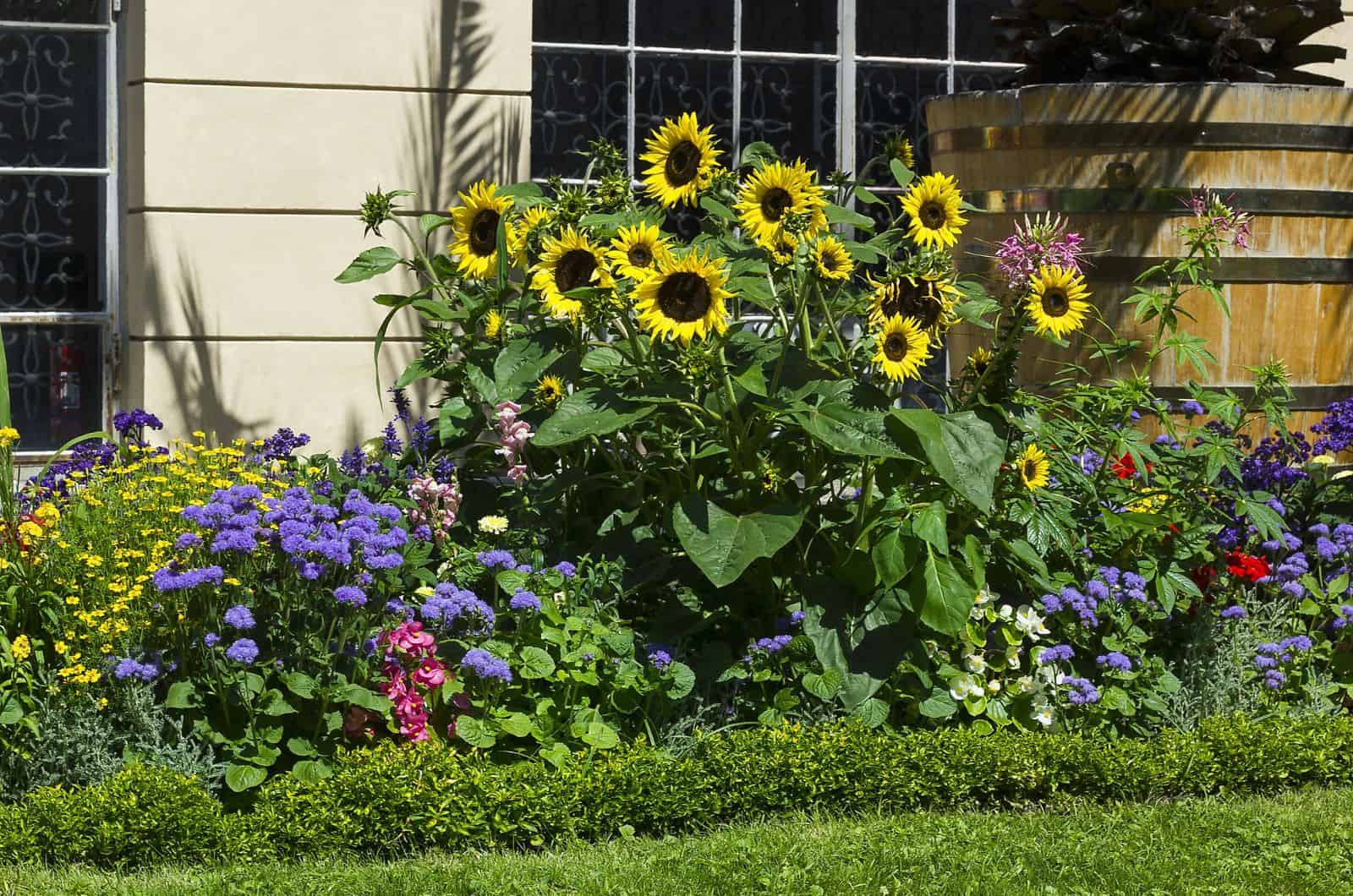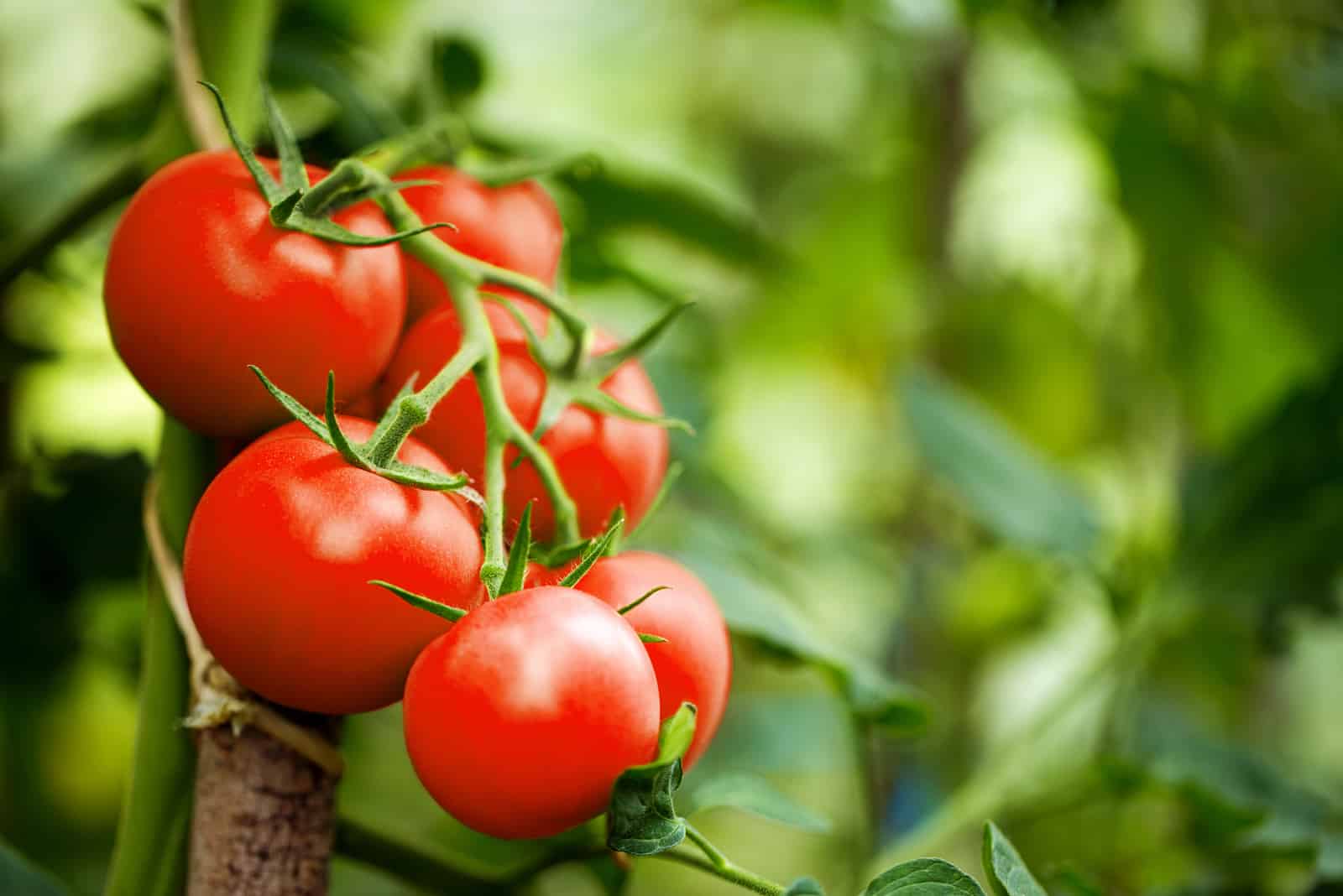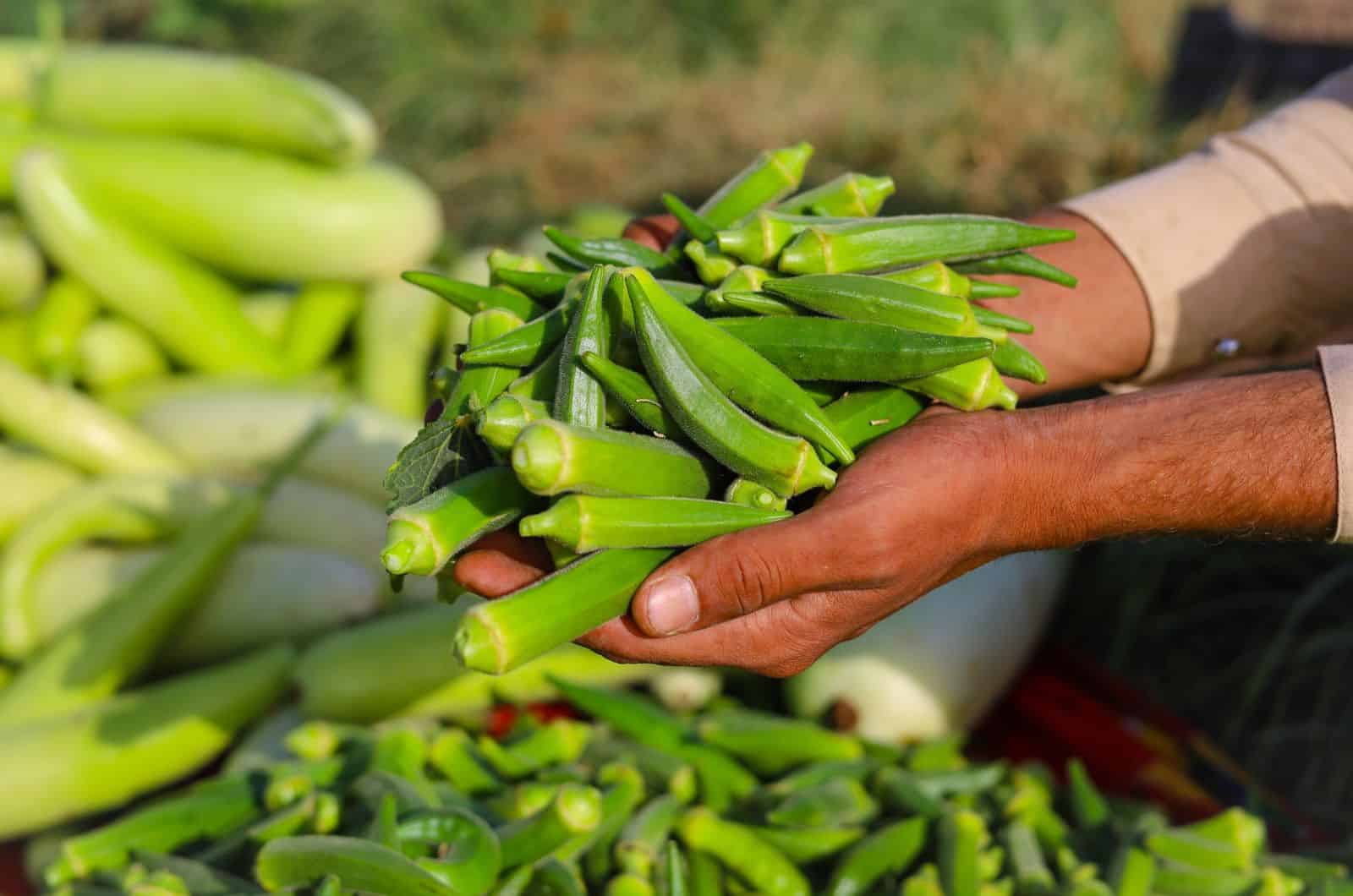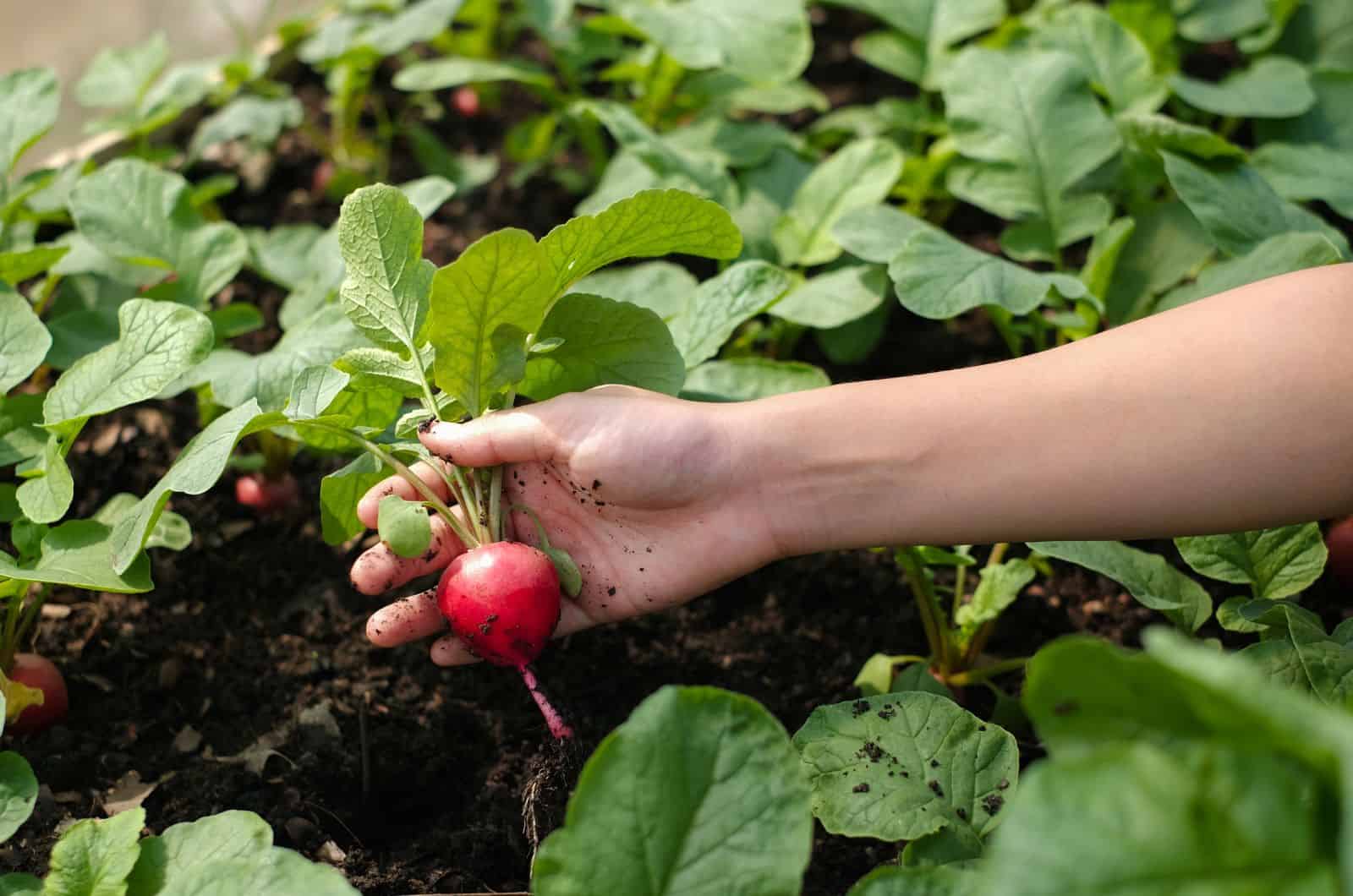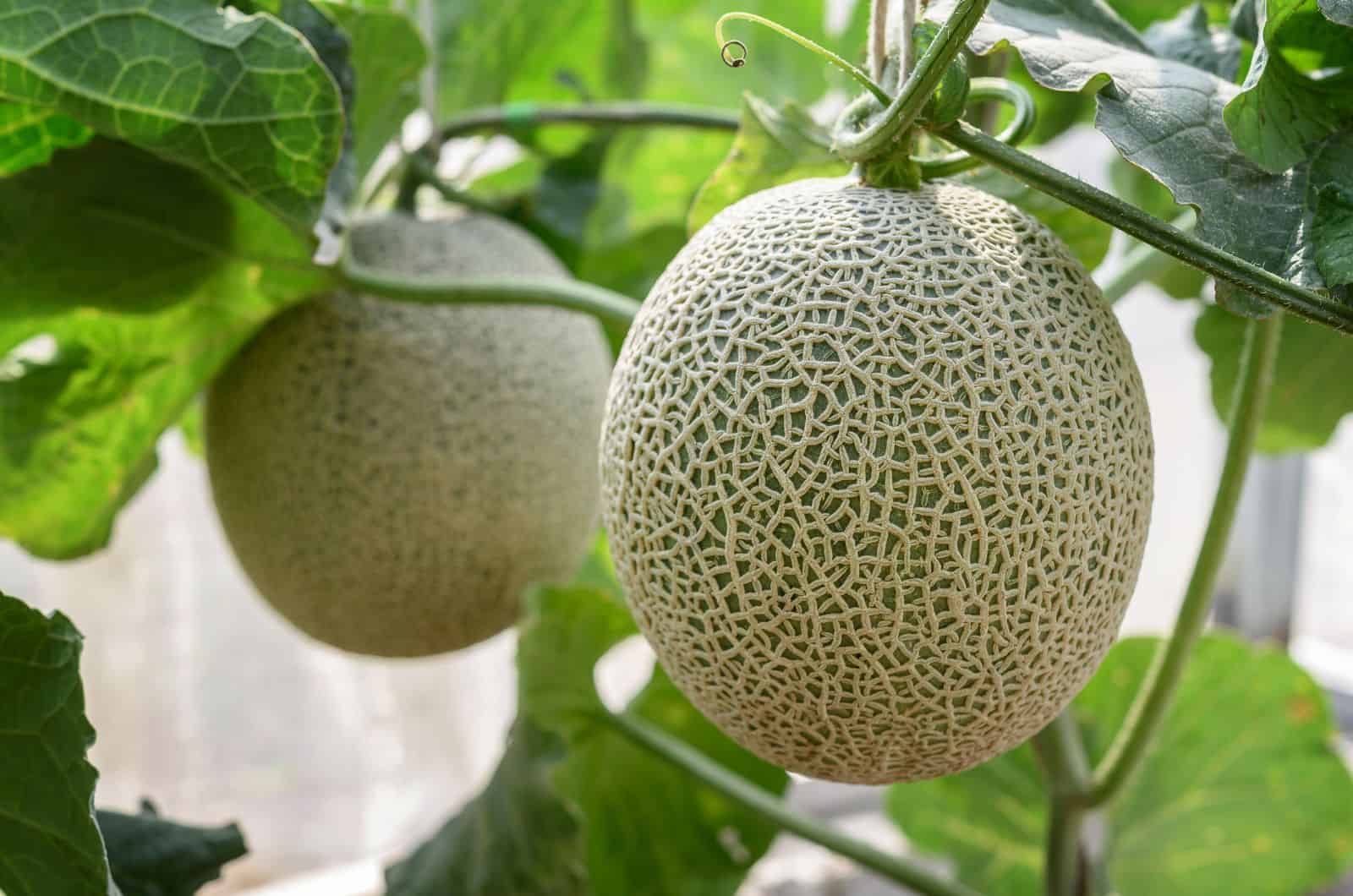Growing vegetables in Arizona does not allow for following regular gardening rules where you plant seeds in early spring and wait for the plant to grow during summer. Since Arizona is located in a desert region, the temperatures can rise to a flaming 105 degrees Fahrenheit!
We can barely get through these hot summer days, let alone fragile vegetables that can be easily damaged by direct sun exposure.
Therefore, growing a vegetable garden in Arizona can definitely be challenging, but not impossible!
Luckily, there are a few delicious vegetables that can grow perfectly well in Arizona’s crazy hot weather, but you should also use some tips and tricks that will improve your gardening and ability to grow vegetables.
Now, let’s look at what vegetables can grow in the flaming Arizona weather!
Is Growing Vegetables In Arizona Challenging?
When we think about the desert, we usually think about the endless sand and hot sun; we rarely think about veggies and water (if we don’t include cacti plants, of course!). So, how on Earth are we supposed to grow vegetables in these conditions?
Well, there are a few veggies that have adapted to growing in full sun—even in deserts!
However, what other reasons make growing vegetables in Arizona challenging?
In addition to extremely high temperatures, there are a few other things that make this whole gardening process a lot tougher. For starters, the humidity is low—plants with a waxy texture on their leaves, such as tall succulents and cacti, have adapted to growing in these conditions. And veggies?
Not so great.
We have already covered the air, so now let’s be a bit more grounded and cover the soil. Clay soil usually dominates in the low desert of Arizona—this type of soil is alkaline and has a low nutrient content.
But the first thing you learn in Gardening 101 is that vegetables need nutrients from the soil to grow and produce their delicious fruits! (They also like slightly acidic soil as well.)
Things get even worse, a layer of soil called Caliche is present in the Arizona ground. This layer consists of soil particles that are cemented together by calcium carbonate and can be found below or under the soil’s surface.
These don’t affect plants per se, but they do affect the drainage, which is a crucial growing condition in the garden.
It seems like there are no vegetables that could survive an Arizona summer and its poor growing conditions, but don’t worry!
There are certain vegetables that have adapted to growing even in the unbearable heat of the summer in Arizona.
Your gardening journey begins now.
How To Improve Gardening In Arizona
• Choose better soil—a quick and easy approach to start gardening the right way is to fill raised beds with compost, coconut coir or peat moss, and vermiculite. Continue adding compost and fertilizers to improve the nutrient content in the soil.
• Choose vegetables that can grow in Arizona—you can’t plant a crop that hates the sun and expect it to grow in the hot Arizona summer. Check out the list down below and see what vegetables are the best to grow in Arizona.
• Find the right water regimen—I recommend that you water the plants in the morning so that the water can slowly evaporate during the day. The watering needs usually depend on the type of plant, so be aware of the specific plant’s watering needs and also the temperature and humidity needs.
• Take advantage of microclimates—some areas in your garden will be warmer, and some areas cooler. Learn which plants can tolerate what levels of heat and sun. During the hottest times of the year, provide your plants with some shade.
• Start mulching—add mulch around the base of the plants. This will prevent weed growth, keep temperatures cooler, and help retain moisture.
• Plant vegetables at the right time—the planting calendar sightly differs in Arizona. Cool-season crops are planted from September to March; warm-season crops from February through May, and monsoon planting begins with the heavy rains in July or August.
Best Vegetables To Grow In Arizona
Growing vegetables in these kinds of conditions can be tough—tough, but still manageable.
Instead of constantly buying and spending money on vegetables and fruits in your local market, you should try your luck and plant vegetables in your own garden!
But, when you live in Arizona, there are fewer options regarding the types of vegetables because not all veggies have tough skin that can tolerate the hot sun in Arizona.
Without further ado, let’s dive in!
1. Tomatoes
Tomatoes are the number one vegetable on our list, but I’m sure that they are everyone’s number one vegetable when it comes to planting, growing, and making delicious meals and sauces!
Growers absolutely adore tomatoes because they are not needy—they only require fertile and well-draining soil with a pH between 5.8 to 7. What’s also great is that they love the sun and can tolerate the heat—which is kind of our major problem when gardening in Arizona.
Tomatoes are high in vitamins C and K and lower the risk of cancer and heart disease.
They should always be a part of a balanced diet, but you’ll need to take the lectins out of tomatoes because they’re not good for you!
When To Plant Tomatoes In Arizona
You can either buy tomato seedlings in the garden center and start growing them indoors before the last frost date or plant them directly in the soil.
If you want to start the seeds indoors, this is usually done in December or January, about 6 weeks before the last frost date. However, if you want to sow the seeds directly in the soil, then wait until around mid-February to do so.
Tips For Growing Tomatoes In Arizona
Knowing the stages of tomato seedling development is a good idea because you’ll be able to determine when to water it and how much light it requires.
To have wonderful tomatoes in your salad, however, you should expose them to at least 6–8 hours of sunlight each day, but 10–12 hours per day is ideal. This is because as the plant ages, it requires more and more light.
However, these veggies don’t grow when the temperatures are constantly higher than 85 degrees Fahrenheit because the flowers will be wilting, even though they are pollinated. In this case, make sure to provide them with some shade during the day to help them survive and produce fruits.
You should also protect the fruits from being exposed to hot sun thorough the day to prevent sunscald. If you notice any sunscald on your tomatoes, immediately pluck them to avoid spreading.
Compost is a great option for fertilizing tomato plants because they need it frequently. You can also cover the soil with mulch to neutralize the compost.
Tomato plants are extremely prone to overwatering, so ensure that the soil is dry before watering them (though I don’t think that would be an issue during the Arizona summer).
2. Corn
Zea mays, also known as corn, is a tall annual cereal grass that is commonly cultivated for its enormous, elongated ears of starchy seeds. The seeds, which are commonly known as maize, are processed into a variety of important compounds, as well as food for humans and cattle and as a source of biofuel.
Native Arizonans have grown corn for centuries!
Corn has become drought-tolerant over time and has most certainly adapted to growing in Phoenix, Arizona. What’s also great about these plants is that they are wind-pollinated, so you won’t have to take matters into your own hands and pollinate them by yourself.
The trick is to plant corns close to each other—they should be planted in an area that is 10×10 square feet, as any less footage would pose certain issues with pollination.
When To Plant Corn In Arizona
Plant corn in Arizona’s low desert between mid-February and mid-April. In Arizona, seasoned farmers advise planting on March 1. When the monsoons arrive in late July or early August, you can try your luck and plant them again!
Do not plant them in one long row. Instead, you should plant them in 3 to 6 smaller rows to enable good pollination and full ears.
Tips For Growing Corn In Arizona
You guessed it, these types of vegetables love being under full sun exposure throughout their growing season. They thrive in well-draining soil that has been fertilized before planting.
However, these plants also require monthly fertilization, or you could add organic compost to encourage their growth and development.
Even though they are drought-tolerant, I recommend that you water them daily, as the water evaporates quickly due to the extremely hot temperatures. You should also provide them with some type of support as they grow (staking is a great option).
3. Green Beans
Another veggie that is great for growing in Arizona gardens is green beans!
These delicious and nutritious vegetables are filled with components that are extremely beneficial to our health. These include vitamins A, K, and C, as well as iron, potassium, magnesium, and fibers. Green beans have a similar nutritional value to Okra and Snap peas.
In addition to having a high nutritional value, these beans belong to the Legume family, which is known for its nitrogen-fixation ability. Nitrogen is abundantly present in the air but not so much in the soil.
It is a necessary element for fruit production, which is why green beans are usually grown together with other vegetables in containers. These veggies take nitrogen from the air and convert it for the plants to use for growth and development.
You see that you are not the only hard worker in your garden.
When To Plant Green Beans In Arizona
You can plant green beans as soon as the soil starts to warm up.
In Arizona, they are usually planted in March and early April, and then again at the end of July and in September.
You can either grow bush beans or pole beans—the choice is totally up to you!
Tips For Growing Green Beans In Arizona
What’s great about green beans is that they can grow perfectly fine in clay or sandy soil. They usually prefer more neutral to acidic pH levels, and you can also add small amounts of fertilizer to boost their growth.
These veggies require frequent watering, though you can add mulch around the base of the plant to help retain water moisture. Water them in the morning or late afternoon because during the middle of the day, the temperatures are at their highest, and the water will simply evaporate.
4. Eggplant
Eggplants are great vegetables to grow, especially if you want to have a gothic garden that is filled with black vegetables. Not only are these veggies easy to grow, but they are also filled with nutrients that are super beneficial to our health.
The eggplant is amazing because it has polyphenols that aid in the breakdown of sugar in cells and also vitamins C and A that protect cells from damage. This is helpful if you have diabetes.
To treat asthma, ancient Indians used eggplant roots.
Eggplants are a common ingredient in meals. They can be grilled, cooked, stuffed, filled, served in stews or soups, or they can be included in curries. The skin of the eggplant is the healthiest portion of the plant, and it’s also delicious!
When To Plant Eggplants In Arizona
You should start the seeds indoors first, usually from mid-December to January or from May to June. Then, eggplant seedlings should be transplanted to the outdoor garden in March, July, or August—depending on when you started the seeds.
As the eggplant is going through different growing stages, it will change and start producing flowers at first, which will eventually change to fruits. If there are numerous clusters of flowers, try removing some so that the plant can direct its energy to leaf and fruit production.
Tips For Growing Eggplants In Arizona
According to the University of Arizona, the eggplant is simple to grow in the low desert southwest. Despite preferring rich, well-drained soil with a pH of 5.5 to 6.5, it thrives in a variety of soil textures. It needs at least five months of warm weather to produce fruit and does best in direct sunlight.
Between 70 to 85 degrees Fahrenheit is the ideal growing temperature during the day. If the temperature is over 95 degrees Fahrenheit, the eggplant stops producing fruit and may also shed blossoms or abort immature fruit. When temperatures drop below 60 degrees Fahrenheit, fruit development is also reduced.
Give them an inch of water per week and make sure to water them thoroughly as their roots can grow deep. What’s also great about these veggies is that they can tolerate drought, though they prefer consistent watering.
5. Okra
The best veggies to cultivate in the gardens are definitely Okras! They are also referred to as ladyfingers, and they are native to the southern US, which is ideal because they like warm climates.
Okras are tasty, simple to grow, and have lovely flowers that make them look very attractive. In addition to this, they are not susceptible to the majority of pests and absolutely love Arizona summers!
The most popular types include the Louisiana Green Velvet, Cow Horn, Emerald, and Go Big.
Okras help to eliminate cancer cells and promote heart health. They might also protect against liver illness and enhance vision.
Okras are also high in calcium and magnesium and can help with deficiencies of both these nutrients.
When To Plant Okra In Arizona
Generally speaking, Okra seeds should be planted two or three weeks after the last frost date. They are usually started indoors, and then the seedlings are transplanted once the soil has warmed up.
In Arizona, these veggies are usually planted from the middle of March to the end of May.
Tips For Growing Okra In Arizona
Okras thrive in fertile soil that drains properly. These plants are perfect for growing in Arizona because they do well in both full sun and partial shade and can also grow in loamy or sandy soils.
They don’t like cold weather that much, and if the temperature drops down, they will become vulnerable to pests and diseases.
Okra plants need an inch of water every week.
6. Potatoes
We all know that potatoes are root vegetables that grow beneath the soil surface, which means that the flaming Arizona sun can’t even reach these veggies!
Did you know that potatoes have more potassium than bananas?
Yep, these little veggies are filled with vitamin C and carbs, and it is one of the most energy-packed vegetables.
When To Plant Potatoes In Arizona
There are two planting windows when it comes to planting and growing potatoes in the low-desert Arizona region. First, you can plant them in January or February and wait for the harvest in June and July.
You could also plant them again in September or October, and they will be ready for harvesting in the late winter.
Tips For Growing Potatoes In Arizona
Since they spend all of their life in the soil, you’ve got to make sure that they are comfortable!
Potatoes thrive in slightly acidic soil that is loose and well-draining. They require little fertilizer at the beginning of the growing season, and you can add a bit more once the potatoes have reached the sprouting stage.
When it comes to the watering requirements, make sure that the soil is evenly moist and let the soil dry out a bit before watering them again.
7. Zucchini
In general, zucchini are the easiest crops to cultivate, making them a great choice for beginner gardeners. In less than three weeks, zucchini are ready to be harvested.
If the right conditions are present, you can even grow zucchini all year long!
The two most popular types are Partenon and Ronde de Nice (baby round zucchini).
There are numerous of health benefits when it comes to incorporating Zucchini into our diets. For instance, Zucchini helps regulate blood flow and enhances eye health. Due to its high folate content, it will provide you with more energy too.
This plant may aid in weight loss because it contains a lot of water and has few calories.
When To Plant Zucchini In Arizona
Zucchini is a warm-season crop that should be planted early in the summer. You can plant Zucchini outdoors in the soil, or you can start growing it indoors in February and then transplant it outside in March.
You can also plant them again in August and wait for the second harvest.
When planting Zucchini, make sure that you find a location where they can get plentiful sunlight throughout the day. I suggest that you fertilize the soil before planting, as these veggies love growing in nutrient-rich soil.
Sow the seeds 1 inch deep in rows that are at least 18 inches apart, and the plants should be about 36 inches apart from one another.
Tips For Growing Zucchini In Arizona
They thrive in well-draining and nutrient-rich soil that has a pH from 6.0 to 6.8. They grow the best in temperatures that are over 70 degrees Fahrenheit, which is great since the temperature rarely drops under 70 degrees in Arizona.
You should water them moderately to keep the soil moist, but avoid watering the entire plant because this can attract various fungi and pests.
8. Armenian Cucumbers
Even though they are called cucumbers, these plants are not cucumbers at all!
Armenian cucumbers are actually musk melons that produce long, dark green fruits that look exactly like cucumbers. What’s also interesting is that the plants vigorously produce vines, just like a cucumber plant would!
They are even similar in taste, which is why they are often used in salads and as an ingredient in cooking. They are predominantly grown in desert regions because they can tolerate the hot summer days.
When To Plant Armenian Cucumbers In Arizona
The name should be Arizona cucumbers because it seems like they are grown in every garden in Arizona!
Armenian cucumber seeds can be planted directly in the soil once the temperature is consistently above 60 degrees Fahrenheit. The usual date for planting Armenian cucumbers in Arizona is January (if you want to start the seeds indoors and then transplant the cucumber seedlings) or late February (if you want to grow the plant outside).
Make sure to prepare the soil before planting—add fertilizers or compost to boost the nutritional content.
Tips For Growing Armenian Cucumber In Arizona
The best thing about these veggies, in addition to being extremely delicious, is their remarkable heat tolerance—hot temperatures simply do not stress this plant at all!
If you are considering growing these fake cucumbers, make sure to provide them with something to climb on (this can be a trellis or stakes). You should water them enough to keep the soil moist but avoid frequent watering as they can be easily overwatered.
If you practice companion planting, then you should plant these Armenian cucumbers near corns—these cucumbers can even start climbing the corns!
When harvesting, make sure to cut the fruit off the vine instead of pulling it because this can damage the plant and affect the other fruits on the plant. Also, there is no need to peel off the skin off this vegetable—not only is it highly nutritious, but it’s also super delicious and makes a great ingredient in any meal!
9. Watermelons
Since we have already mentioned musk melons, let’s talk about watermelons as well!
Even though we are not talking about vegetables per se, watermelons are fruits that have a successful growth rate, especially when grown in warm climates such as in Arizona.
Watermelons, otherwise known as Citrullus lanatus, belong to the family Cucurbitaceae. This is a flowering plant that produces one of the most refreshing fruits out there. Watermelons are low in calories, and they are surely a great summer snack (especially when you put them in a refrigerator for a few hours!).
My friends also sometimes put salt on watermelons as its taste can turn somewhat sweeter, but I usually eat them with honey.
Watermelons love growing in full sun, which is why they are on our list of growing fruits* in Arizona.
When To Plant Watermelons In Arizona
Arizona’s low desert is best suited for planting from the middle of February to March. Start seeds indoors in 4 inch or larger pots, one month prior to planting them outside in cooler climates. Wait a bit before planting watermelon if there is a chance of frost because it is extremely frost-sensitive.
Read also: The 9 Watermelon Growing Stages: A Complete Guide
Tips For Growing Watermelons In Arizona
Since they love soil that is rich in nutrients, I suggest that you apply fertilizers or organic compost before planting the seeds, or during their growing stages. They like warm weather and full sun exposure.
Watermelons should be watered thoroughly as their roots grow deeply in the soil. Please note that watermelons take about 32 days after flowering to be ready for harvesting.
10. Radishes
Here is yet another delicious root vegetable, known as radish!
They belong to the Brassicaceae family, along with Brussels sprouts, Cabbage, Kale, Cauliflower, and so on.
Potassium and calcium-rich radish plants help lower blood sugar and lower the risk of heart disease.
These vegetables should really be a regular component of your diet if you wish to stay away from foods that are high in carbohydrates and sugar.
You can add them to salads, or use them as a cooking ingredient—the choice is yours, get creative!
When To Plant Radishes In Arizona
Plant radishes in Arizona’s low desert between September and March. Keep an eye on the weather, and if it is very warm, postpone planting until it does because these are cool-season vegetables.
Tips For Growing Radishes In Arizona
Radishes prefer nitrogen-rich fertilizers. If you prefer to fertilize the seeds prior to planting them, use bone meal.
If you want to grow more radishes, keep them out of the shade as they prefer bright light.
If you are planting bell peppers, you should also plant radishes to deter pests because they make excellent companion plants.
11. Sweet Potatoes
Continuing with root vegetables, we must mention sweet potatoes as well. Similarly to the regular potatoes, these plants thrive in the low-desert regions of Arizona because they are naturally heat-loving plants.
They are packed with healthy nutrients like vitamin C, fibers, manganese, vitamin A, and lots of antioxidants that are super beneficial to our health!
What differs from the regular potatoes is the taste—as the name suggests, sweet potatoes have a sweet flavor, with some earthy undertones. They are commonly used for cooking and garnishes.
When To Plant Sweet Potatoes In Arizona
Once the soil temperature reaches at least 65 degrees Fahrenheit, plant sweet potatoes 2 to 3 weeks after the last spring frost. Beginning in January and continuing through April, prepare sweet potato slips indoors. Sweet potato slips should be planted outside between March and June.
Tips For Growing Sweet Potatoes In Arizona
This plant loves pH levels between 5.5 and 7.5, acidic to slightly alkaline soil.
It enjoys 8 to 10 hours of sunlight per day and thrives in loamy and sandy soils with adequate drainage. It requires about an inch (2.5 cm) of water per week.
Avoid frequent watering as they can be easily overwatered, which causes root rot—in this case, we can say goodbye to the crops because we are talking about root vegetables!
12. Beets
Wow, we’ve surely dived into the root vegetable world—this is because root vegetables are not directly exposed to high temperatures and the flaming sun in Arizona, and they are most likely to succeed in the gardens.
Beets, also known as Beta vulgaris, are vegetables that have prominent red and purple roots that are commonly used in the food and cosmetic industries. They are packed with vitamins and nutrients, and beet juice is now one of the healthiest beverages out there!
When To Plant Beets In Arizona
If you are planning to grow a beet farm (just like Dwight Schrute from The Office), you should plant the beets at the end of the summer—usually from June To September.
Beets can withstand a little amount of frost and low temperatures. Beets are a winter crop in warm regions like the low desert of Arizona.
Tips For Growing Beets In Arizona
Beets thrive in well-draining and sandy soil—make sure that there are not any rocks or sticks before planting!
If you are growing them in clay soil, then you should add a bit of compost to improve the nutrient content. When it comes to watering, giving them water once a week should keep them happy and thriving.
They should be ready for harvesting 7 to 8 weeks after planting.
13. Swiss Chard
Swiss chard is simple to grow and is quite delicious! Swiss chard contains a lot of vitamins A and K, which are good for your kidney, heart, and lung health.
These plants are excellent for improving reproduction, eyesight, and the immune system. They also include a lot of vitamin C, which helps the body to absorb iron and improves the health of the teeth and bones.
The most popular swiss chard cultivars include Fordhook Giant, Bright Lights, and Barese.
When To Plant Swiss Chard In Arizona
They can be planted directly in the soil, or started indoors and then transplanted outside (growers say that this is the better option). When starting the plant indoors, you should do it in August, and then transplant the seedlings in September.
If you want to plant Swiss Chard directly in the soil, do it in September—they should then be grown by mid-November.
Tips For Growing Swiss Chard In Arizona
Make sure that the soil is loose, fertile, and rich in organic materials. Keep them in full sun as they thrive in direct sunlight!
During the summer, apply compost tea or liquid fertilizer twice.
Beans, onions, and brassicas are the ideal companion plants for swiss chard.
14. Turnips
Turnips are a fantastic choice if you want to grow cool-weather vegetables in your garden. This quickly expanding plant is even more alluring because the roots and greens are both delicious.
Glucosinolates, which are present in turnips, aid in the prevention of all cancers. Due to their calcium content, these plants will also keep your eyes and bones in good condition.
With raw turnips, you can make delicious and nutritious salads that are also Instagrammable!
The most popular turnip varieties are the Baby Bunch, Scarlet Queen, and Purple-Top White Globe.
When To Plant Turnips In Arizona
I must mention here that turnips should not be transplanted, they should be planted directly in the soil or raised garden bed. In low-desert Arizona, these vegetables can be planted from the middle of August to the middle of February, as these are cool-season veggies that prefer growing during the colder months.
Tips For Growing Turnips In Arizona
Weed growth should be actively suppressed because turnips are susceptible to them, so I suggest using mulch around the plant to prevent their growth.
Water the soil an inch every week because it should be constantly moist. The bitter taste of the roots can be avoided if you follow this watering routine.
Avoid nitrogen-rich fertilizers and note that they thrive in temperatures between 40 to 75 degrees Fahrenheit.
15. Cantaloupe
One of my favorite summertime foods is cantaloupe because of how juicy and refreshing they are.
But I must inform you that in North America, melons are frequently referred to as cantaloupes.
They aren’t really cantaloupes, either. A specific kind of muskmelon is, in fact, a cantaloupe.
These melons have orange-colored, delicious flesh inside and a greenish-tan peel. The skin frequently has a pattern on it that resembles a spider web. However, the rinds of other cultivars are striped.
Some health benefits of eating cantaloupes include an improved immune system, reduced blood sugar level, and they also contain electrolytes that keep you hydrated and give you more energy.
When To Plant Cantaloupes In Arizona
The optimal time to plant cantaloupe in Arizona’s low desert is from mid-February through to July. In colder climates, start indoors approximately three weeks prior to the last frost date.
Transplant the seedlings outdoors once the soil temperature reaches at least 65 degrees Fahrenheit, and the overnight temperatures above 50 degrees Fahrenheit.
Tips For Growing Cantaloupes In Arizona
They thrive in warm climates and full sun, which is why they are perfect for growing in Arizona gardens. Cantaloupes prefer well-draining and fertile soil, therefore, you should apply fertilizers before planting and during the growing season.
They require moderate watering. The Cantaloupe soil shouldn’t be allowed to totally dry out, but you should also watch out for waterlogging. Remember, the better the conditions, the more cantaloupes will you get per plant.
16. Artichokes
Artichokes are members of the aster family, and they are probably the most unique-looking vegetable out there! Many people use artichoke flowers for landscaping.
The edible parts of these plants consist of immature flower buds that are eaten before they start blooming. These veggies are hard to prepare, but they sure are a great addition to lots of types of meals!
Since they love the sun, they will be a great addition to every garden in Arizona!
When To Plant Artichokes In Arizona
If you live in Maricopa county, mark from October to January in your planting calendar as the months when you should plant Artichokes. These months are perfect for starting the plant indoors, and then transplanting it to the outside garden (usually from January to March).
However, you can also put the plant directly into the ground—the perfect time is from mid November to mid December.
Tips For Growing Artichokes In Arizona
They prefer growing in sandy or loamy soil that is well-drained. Artichokes thrive in direct sunlight, and should be fertilized every four weeks.
These plants don’t require much water—using 2 inches of water per week should be enough to keep these plants happy and thriving!
17. Asparagus Beans
Asparagus beans, just like the green beans, belong to the Legume family. They also produce long, green pods with immature green seeds. These are also called the Chinese long bean, Yardlong bean, Long-podded cowpea bean, Snake bean, Pea bean, and Bora.
They have a similar flavor and growing condition to the green beans, though the Asparagus ones produce somewhat longer pods, which can decorate the garden—trust me, you will have the prettiest garden in Tucson if you plant these beans and a flowering plant!
When To Plant Asparagus Beans In Arizona
The perfect time to plant these magic Asparagus beans in low-desert Arizona is from the middle of March to the middle of July. These plants are planted directly in the soil, so there is no fuss about starting the seeds indoors and then transplanting them again.
Tips For Growing Asparagus Beans In Arizona
As we have already said, they have almost the same growing conditions as the green beans. They prefer growing in sandy or clay soil with neutral to slightly acidic pH levels.
They require frequent watering to keep the soil moist, and you can even mulch the plant to prevent weed growth and retain the moisture.
Asparagus beans are suitable for growing in the USDA hardiness zones from 2 to 9, which suits the Arizona region that falls into hardiness zones from 5 to 9.
18. Malabar Spinach
If you live in Mesa and love spinach, but you have a hard time growing it in your own garden—no worries!
The Malabar spinach is the perfect solution for you!
This type of spinach can easily be grown in the hot Arizona summer, so hopefully, it can give you strength just like Popeye… or maybe not, because this plant is not a true spinach. Here, we are talking about a leafy vegetable that looks exactly like spinach.
Unlikely like our true spinach, the Malabar spinach thrives in hot climates and can even survive temperatures over 90 degrees Fahrenheit (and we know that Mesa runs hot, right?).
When To Plant Malabar Spinach
The Malabar spinach should be planted from the middle of January to April if you want to start plant indoors. If you want to immediately sow this vegetable in your garden, then do so from March to May.
Stick to this planting guide and you will have fresh fake spinach in no time!
Tips For Growing Malabar Spinach In Arizona
Even though Malabar spinach can grow perfectly well in the hot Arizona summer, they are still tropical plants that need constant moisture. The soil should be kept evenly moist if you want to get the best flavor.
They can grow in different soil types, though they prefer the pH levels to be from 6.5 to 6.8. Bear in mind that they also like lots of nutrients, so you should fertilize them occasionally.
19. Sunflowers
Sunflower fields are truly mesmerizing. With their big yellow heads and long stems, the flowers sure do look like numerous miniature Suns that are running around the field, especially if the wind is blowing!
Sunflowers are flowering plants that belong to the daisy family called Asteraceae.
If you have large fields in Arizona but can’t plant fruit trees, then sunflowers are definitely your go-to option!
Not only do they look dreamy, but these plants also produce delicious seeds that have high nutritional value and can be manufactured into oil.
When To Plant Sunflowers In Arizona
Sunflowers are usually planted from the middle of February through July, and they can grow and bloom the whole year around!
Tips For Growing Sunflowers In Arizona
They don’t look like mini Suns for no good reason—these plants admire the sun so much that they simply can’t get enough of it. Therefore, you won’t have to worry about direct sunlight damaging your new sunflower field.
They need watering once a week, or when the top 2 inches of the soil have completely dried out. Sunflowers like soils that range in pH from 6.0 to 7.5, which are slightly more acidic than alkaline. They flourish in nutrient-rich, organic-rich soils like loam.
You should sometimes add nitrogen fertilizer to the soil where you plant your sunflowers to avoid nitrogen deficiency.
Conclusion
Though growing vegetables in Arizona can be challenging sometimes, you can see that there are plenty of vegetables that have successfully adapted to these extreme weather conditions.
With little water and fertilization, you can grow quite a large vegetable garden, with lots of different super delicious and healthy veggies there!
Just stick to the planting guide and use the tips for growing these veggies in Arizona, and you will truly understand the essence of gardening.
I hope this article was helpful.
Until next time!
Like this post? Share or pin it for later!

